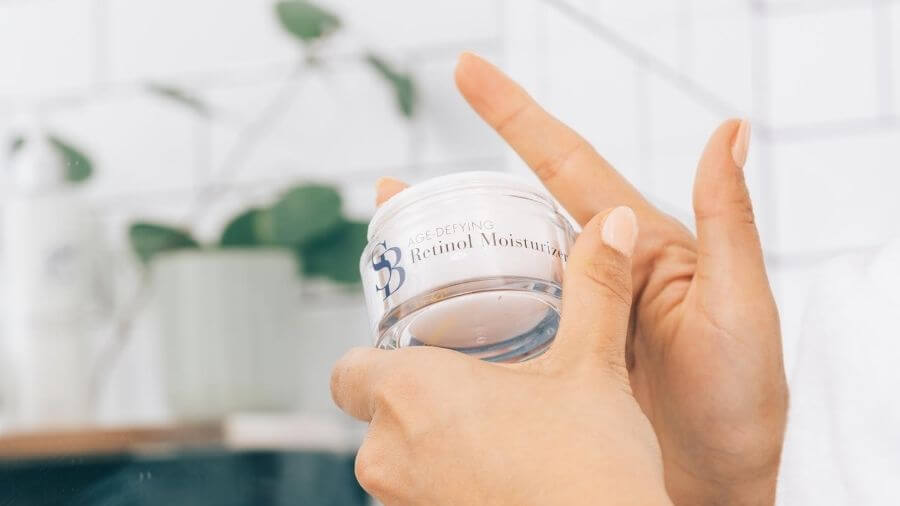Say good-bye to sweaty days, constant sunscreen application, and a sun-kissed glow. Summer is fading into history, and crisp and sometimes chilly fall is on its way.
While you’re probably ready to break out your favorite sweater and boots and swap out the rest of your wardrobe, are you ready to swap out your skincare routine too?
Some things you’ll naturally do without thinking much about, but there might be some things that your routine is missing. The following checklist will help you prepare your skin for the cooler months ahead.
Cold weather skincare checklist
Dry air, heaters, windburn, and more make your skin vulnerable in the harsh cold months of winter and even chilly fall days. Your skin needs more moisture, and you’re in charge of supplying that. You might instantly think of using a lotion, and that’s definitely one solution, but there are more ways to give your skin the moisture it needs.
Exfoliate. Prepare your skin for the season and for the moisturizing you’ll be using, by exfoliating it to get rid of stubborn dirt and dead skin cells. Try using a moisturizing product that also contains lactic or salicylic acid for gentle exfoliation. After prepping your skin for the season, cut back on your exfoliating regimen.
Moisturize. Now switch from an exfoliating moisturizer to one that’s richer to give your skin the most moisture and keep it trapped in place.
Simple Beauty's Age-Defying Retinol Moisturizer is a great option for hydrating your face. Retinol not only supports healthy skin, but it goes to work deeper on your skin to combat visual signs of aging.
Moisturize after your shower. The best time to moisturize your entire body is after your shower when your skin is still damp. Take advantage of that remaining moisture.
Moisturize again. To get the best results, use the moisturizer in the morning and at night. You might even want to carry hand lotion with you and use it every time you wash your hands.

Drink water. Add moisture from the inside out by drinking more fluids. Water is your best option, but you can mix it up.
Eat foods with fluids. You get direct moisture from drinking water, but eating foods that are largely made up of water can be just as good. Familiarize yourself with water-rich foods, and add more of them to your diet. Try:
♦ Watermelon
♦ Strawberries
♦ Cantaloupe
♦ Peaches
♦ Oranges and grapefruit
♦ Cucumbers
♦ Lettuce and cabbage
♦ Soup
♦ Celery
Vitamins and supplements. If you aren’t great about drinking water or eating healthy, then adding vitamins and supplements that support hydration is the answer. Look to add more of the following:
♦ Vitamin E
♦ Fish Oil
♦ Antioxidants, like lutein and zeaxanthin
♦ Vitamin D
♦ Zinc
♦ Astaxanthin
Use a humidifier. Treat the air around you with a humidifier to add moisture. You can add some essential oils if you want to try getting benefits from that as well.
Protect your skin. Bundle up in the winter months to protect your skin from wind and weather damage. Cheeks, lips, and fingers tend to be especially prone to dry weather and the cold. Protect them by wearing the appropriate clothing and a lip protectant.
Try a face mask. A face mask can hydrate your skin, remove excess oil, and improve pore health. The best thing about face masks is they are easy to do and feel like the ultimate in pampering. You can buy a commercial one, or you can mix up a face mask recipe at home and customize it to your skin concerns.

Sunscreen. Did you already put your favorite sunscreen away? It’s either time to pull it back out or try a new one that you like even better for the winter. Most people don’t spend as much time outside in winter and don’t need as much sunscreen, but it’s still an important part of your daily regimen.
To put it simply
Your skin needs you. In the colder months, it faces a new host of evils that zap it of moisture and leaves it susceptible to skin conditions like eczema and dermatitis.
The best way to bolster your skin’s defenses is to moisturize constantly and regularly. Simple Beauty's Age-Defying Retinol Moisturizer not only moisturizes but the potent blend of retinol, peptides, and natural botanicals work together to smooth, plump, and refresh your skin, for a more soft, youthful-looking appearance.
In addition to external moisturizing, you should also try adding moisture through what you eat, drink, and by taking vitamins and supplements.
Sunscreen and appropriate clothing go a long way toward protecting you from the elements. And, at the end of the day or week, a nice therapeutic face mask while relaxing in a humidifier-enriched room can be divine.
